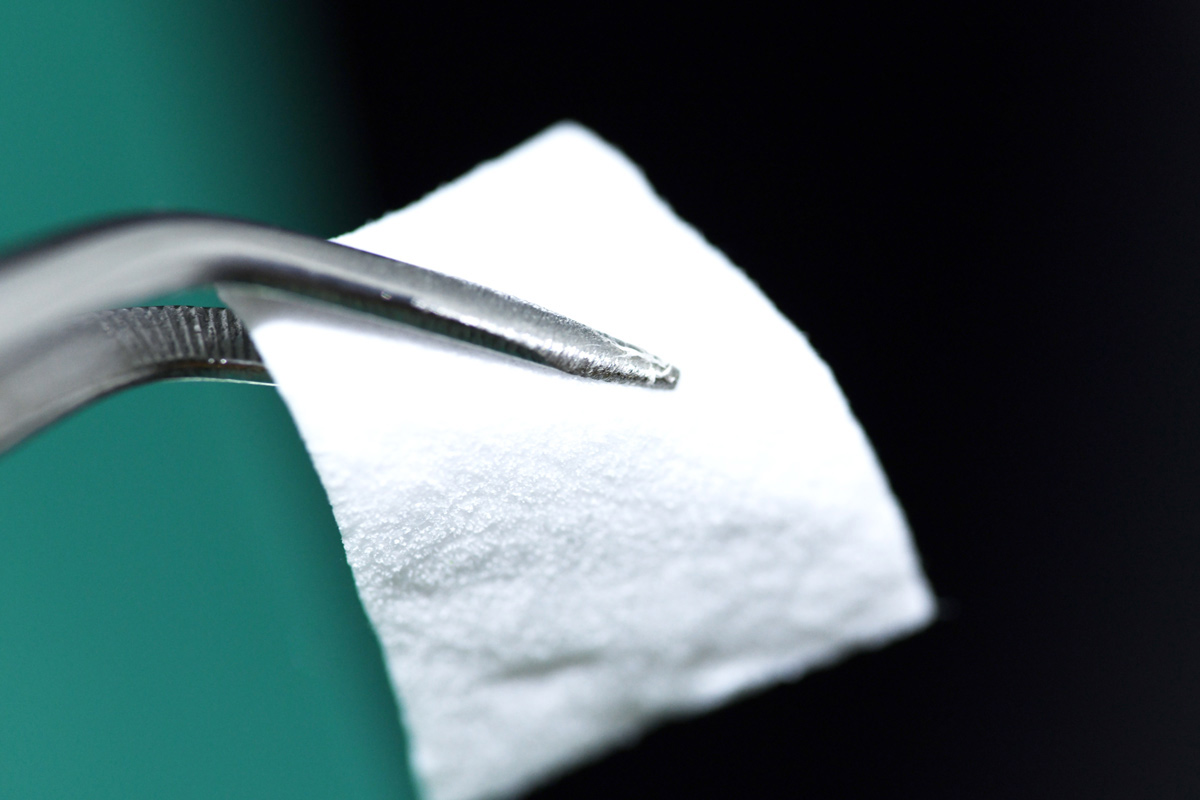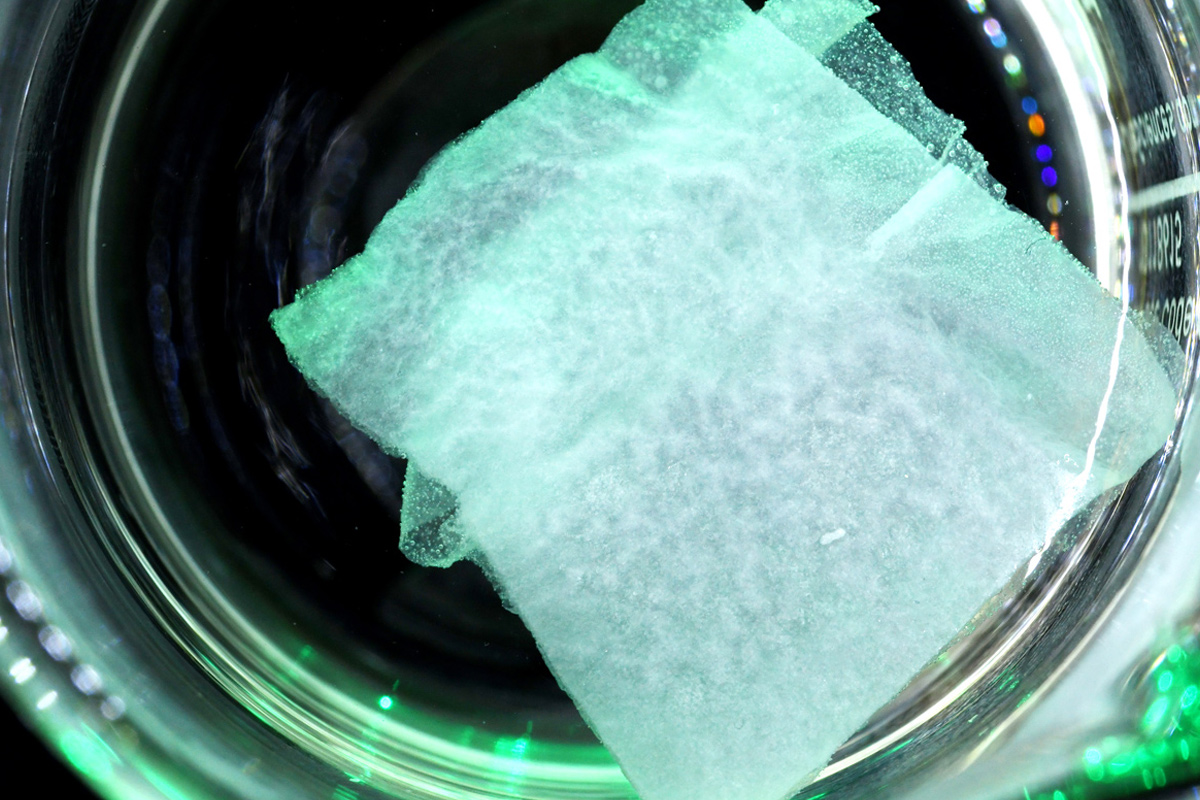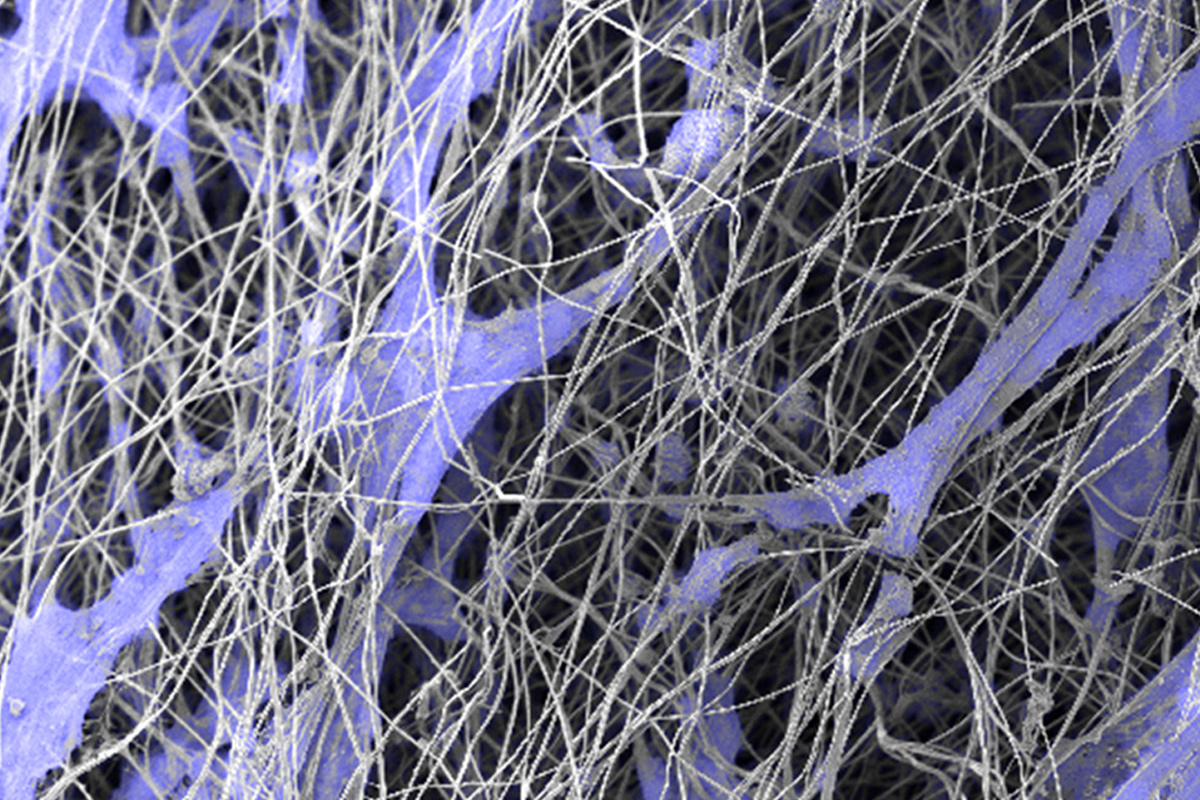
Biomaterials are an essential component for mimicking the natural environment of cells or creating biological surfaces with additional functions. They cover a wide range of different substrates, including synthetic, natural, and hybrid materials.
One way to produce biological extracellular matrices (ECMs) is through the process of tissue decellularization. The resulting decellularized ECMs (dECMs) contain much of the biological information (architecture, protein composition, structure) of functional tissues, which plays a significant role in cellular function expression and maintenance. The preservation of physiological parameters makes dECMs suitable carrier structures for building cellular in vitro test systems. For example, the use of porcine intestinal dECMs (small intestine submucosal serosa and mucosa [SISser] and [SISmuc]) enables the construction of intestinal and tumor models whose cellular characteristics reflect physiological reality much more accurately than models based on simple plastic membranes. Although the generation of dECMs involves the necessity of an animal experiment to isolate the porcine tissues, building physiological models can generate robust insights that would otherwise require numerous animal experiments.
In the awareness of reducing animal experiments in research, another focus is on the development of biologized, synthetic materials. Organic materials serve as a basis for being structured through various methods. Subsequently, the synthetic matrices are biologized to meet the cellular requirements by adding biological components, such as protein mixtures or peptide chains as cellular attachment points. Using this process, electrospun polycaprolactone-based fiber sheets, for example, can be used to build a multi-layered skin model and established as an animal-free alternative to collagen-based skin models. In accordance with this work, other projects focus on the production of synthetic hydrogels and solid matrix structures to continually expand the range of alternatives to animal-based biological ECMs.




Pictures: © Fraunhofer ISC
Images of a synthetic fiber mesh produced by electromelting. These fiber meshs serve as a foundation for the construction of cell culture models with barrier function. The illustration represents the example of a skin model (Figure modified from Weigel et al., Advanced Materials, 2022).
